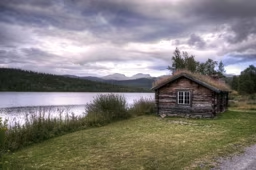Q: We have a place in northern Wisconsin that utilizes a water softener and has a septic field. We unplug the softener when we are not there so the softener runs only occasionally. Currently, the water softener brine runoff empties into our backyard, killing the grass. There is also a threat of freezing and back-up in the winter. Can I re-route the water softener output into my septic tank? – Jeff Ulm; via e-mail
A: It’s not a good idea to route the runoff to your septic, because it alters the bacterial activity. The sodium decreases enzyme action and can actually “eat” the concrete. Even if you don’t have a concrete-lined tank, the salty water still slows down the whole decomposition process. There are a couple of different solutions that may work well in your situation.
If you like the look of rock gardens, installing one gives you a place to drain the softener discharge. As long as you make sure the pipe is elevated (not lying flat on the ground) and has a slope that allows it to drain completely, this would eliminate the back-up freezing effect and keep your grass green.
If you’d like a little plant life within your salty rock garden, there are a few plants tolerant of high-saline conditions: sea thrift (armeria maritima); Foerster reed grass; blue lyme grass; and fountain grass (pennisetum alopecuroides).
The rock garden should, however, be considered more of a short-term drainage solution. The high concentration of salt isn’t good for soil, and even though the salt will be somewhat contained within the garden, it will eventually seep.
A better long-term option is to install a drywell (you can find these at most home centers).
This project is a little more complicated, involving a deep hole (6 to 8 feet) at least 20 feet from your cabin and as far away from the lake as possible – to prevent the discharge from leaching into the lake. After digging the hole, place the drywell in the hole and drain the runoff to it. The hole has to be this deep, because it’s a “whitewater system” and likely to freeze. Again, the pipe running from your home to the drywell would need to drain well, so slope is important. You can use ½-, ¾- or 1-inch PVC pipe, start about 2 inches below grade, and angle the pipe to meet the drywell.







